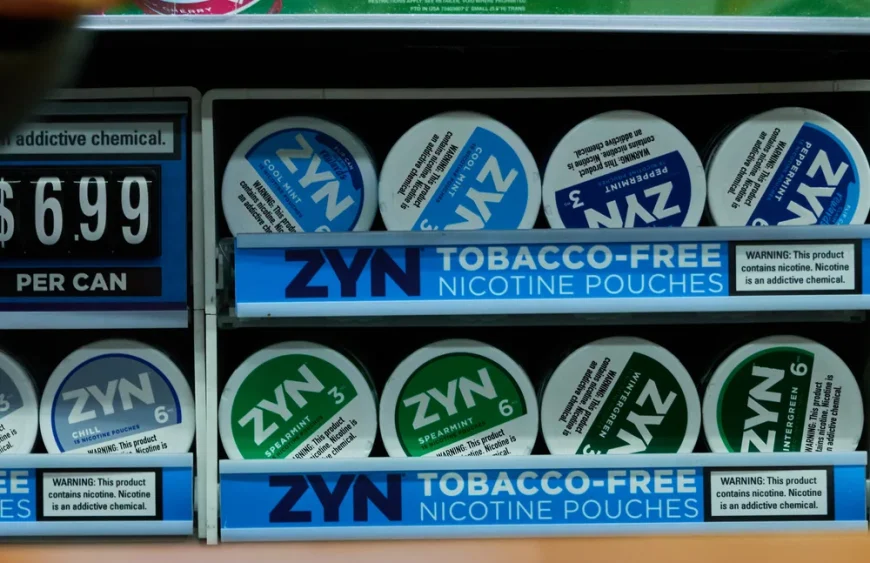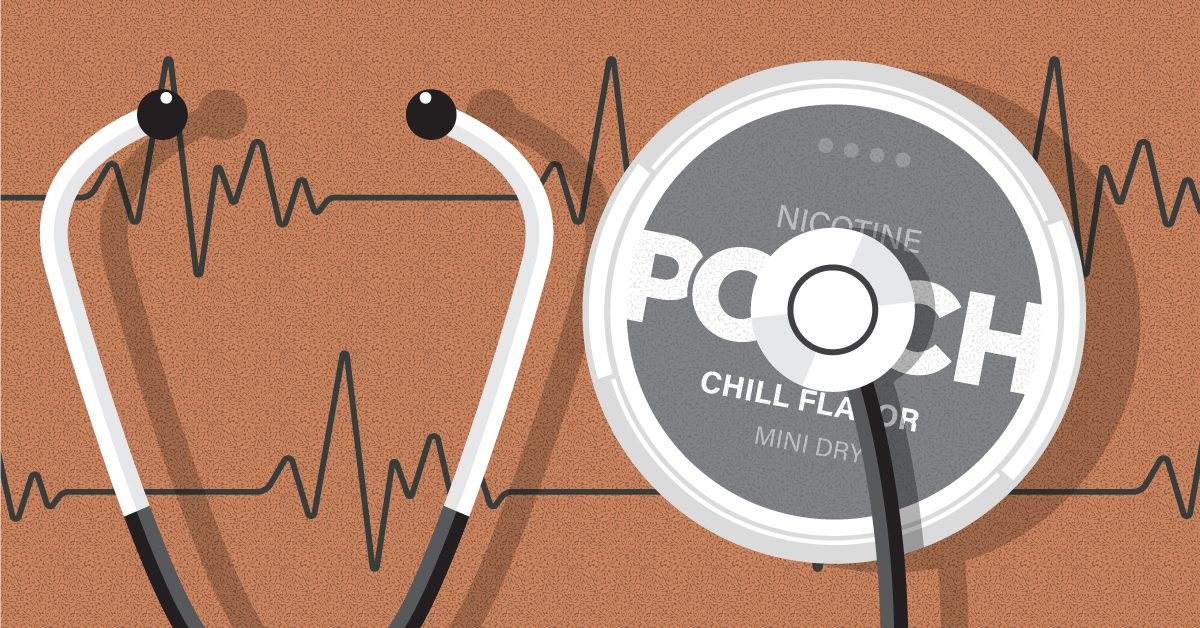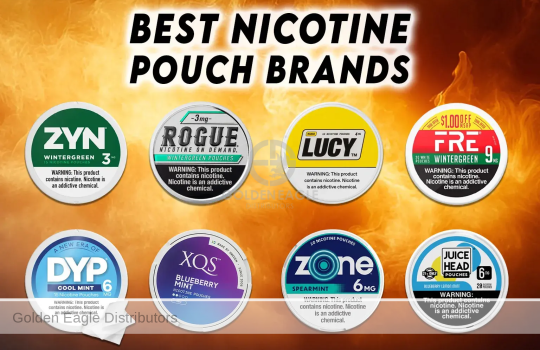The Health Implications of Using Nicotine Pouches: What You Need to Know

The Health Implications of Using Nicotine Pouches: What You Need to Know
Introduction to Nicotine Pouches
If you’ve wandered down the path of nicotine alternatives, you’ve likely stumbled upon nicotine pouches. But what exactly are they? Well, imagine a small, teabag-like pouch that you tuck inside your mouth—yep, that’s it! They’re a smokeless form of nicotine delivery, allowing users to get their fix without the smoke, flames, or tobacco leaves. Designed to be discreet and convenient, nicotine pouches provide an option for those looking to sidestep the traditional smoking route while still indulging in nicotine. Plus, there’s a wide range of flavors to choose from, making the experience a bit more flavorful.
What Are Nicotine Pouches?

In recent years, nicotine pouches have emerged as a popular smokeless alternative for people looking to cut back on smoking or quit tobacco altogether. These little packets of nicotine goodness are gaining traction in the market, but what exactly are they?
Composition and Ingredients
Nicotine pouches are small, teabag-like packets filled with a carefully crafted mix of ingredients. Unlike traditional tobacco products, they generally do not contain tobacco leaf. Instead, these pouches utilize synthetic nicotine or nicotine extracted from tobacco plants without the plant material. Here’s a closer look at the typical ingredients you’ll find in a nicotine pouch:
– Nicotine: The central component, extracted and purified to ensure users receive their desired nicotine hit without the harmful effects of burning tobacco.
– Fillers: Often made from plant fibers like cellulose, these fillers help in maintaining the shape and structure of the pouch.
– Flavorings: From mint to berry to more exotic flavors, additives are used to make the experience more enjoyable and to cater to a wide audience of taste preferences.
– pH Adjusters: Ingredients such as sodium carbonate help maintain the pouch’s pH levels, optimizing the release and absorption of nicotine in the mouth.
– Humectants: Substances like propylene glycol or vegetable glycerin are added to retain moisture, ensuring the pouch doesn’t dry out.
This composition ensures that users can discreetly tuck a pouch under their upper lip and enjoy a slow release of nicotine, sidestepping the smoke or vapor associated with other nicotine delivery systems.
How They Differ from Other Nicotine Products
Nicotine pouches stand out among the plethora of nicotine products available on the market today. But how? Let’s break it down:
– Smokeless and Non-combustible: Unlike cigarettes or cigars, nicotine pouches do not involve combustion, which means you are not inhaling harmful smoke or tar. This attribute is one of the primary selling points for those seeking a less harmful nicotine fix.
– Tobacco-free: These pouches differentiate themselves from snuff and other chewable tobacco products by often being completely tobacco-free. This means users are potentially exposed to fewer harmful chemicals than traditional tobacco products.
– Discretion: With no smell or vapor, you can pop a pouch in your mouth without drawing attention – a significant advantage in social or professional settings where smoking or vaping might not be ideal.
– Variety of Flavors: There’s a greater variety of flavors available in nicotine pouches compared to traditional tobacco, making them an appealing option for those seeking something new.
Together, these factors contribute to why many are opting for nicotine pouches as a modern alternative to meet their nicotine needs.
Health Implications of Nicotine Pouches

Despite being marketed as a safer alternative to smoking cigarettes or chewing tobacco, the health implications of nicotine pouches remain a topic of ongoing research and concern. Understanding these implications is crucial for anyone considering their use.
Potential Health Risks
Nicotine, in any form, isn’t free from health risks, and nicotine pouches are no exception. Here are some potential health risks associated with their use:
– Addiction: Nicotine is highly addictive. Even though nicotine pouches eliminate many harmful substances found in traditional tobacco, they still contain nicotine, which can lead to dependence.
– Heart Health: Use of nicotine can raise heart rate and blood pressure, thus increasing the risk of cardiovascular issues. Long-term use might exacerbate these effects, potentially leading to heart disease or stroke.
– Oral Health Concerns: Though smokeless, continuous use of nicotine pouches might lead to issues such as gum irritation or mouth sores. Extended exposure could potentially impact dental health, leading to cavities or gum disease.
– Young Users: There’s heightened concern about young users, who may experiment with nicotine pouches due to their appealing flavors. Young brains are particularly susceptible to the addictive properties of nicotine, which can affect brain development and lead to early nicotine addiction.
Short-term Effects on the Body
Immediately after using a nicotine pouch, users might notice some short-term effects as nicotine is absorbed through the lining of the mouth. Some of these effects can include:
– Alertness and Energy Boost: As a stimulant, nicotine tends to make users feel more alert and awake. Some might use it as a quick pick-me-up.
– Dizziness and Nausea: Especially for those unaccustomed to nicotine or sensitive to stronger doses, users might experience feelings of dizziness or slight nausea.
– Taste Alteration: The flavorings used in pouches can temporarily alter the sense of taste or leave a residual taste in the mouth, which can be pleasant or unwelcome, depending on the individual.
These short-term effects might seem mild compared to smoking, but they represent the body’s immediate reaction to nicotine.
Long-term Health Consequences
Research into the long-term health consequences of nicotine pouch use is ongoing. However, here’s what we currently know, and some areas of concern:
– Chronic Health Issues: Extended use of nicotine, even in non-combusted form, potentially holds risks for prolonged cardiovascular stress. This could manifest over time as heart disease or other circulatory system ailments.
– Behavioral Impacts: Long-term dependence on nicotine affects daily behavior and can interfere with personal and professional responsibilities. It might also pose an economic burden for those repeatedly purchasing these products.
– Gateway to Other Nicotine Products: There is a legitimate concern that users might transition to other nicotine delivery systems, seeking stronger or quicker hits as tolerance to nicotine develops.
– Research Gaps: Given their relative novelty, there’s a lack of extensive longitudinal studies on nicotine pouches compared to other tobacco products. So, while initial findings suggest they may be less harmful than smoking, their full health profile remains to be thoroughly explored as more users turn to them over the years.
Overall, while nicotine pouches are often marketed as a safer way to consume nicotine without the multiple health risks associated with smoking tobacco, they aren’t without their own set of health implications. As nicotine products evolve, it’s vital for users to stay informed and consider both their short-term desires and long-term well-being. Understanding these factors will help individuals make more informed choices about their nicotine use and potentially transition to healthier alternatives. For many, the journey of exploring nicotine pouches begins with information, and ends with wiser health decisions.
Comparing Nicotine Pouches to Smoking and Other Alternatives

When it comes to nicotine consumption, there are more choices than ever before—ranging from traditional cigarettes to electronic vapes, and of course, nicotine pouches. Many people look to nicotine pouches as a healthier alternative, but how do they really stack up against other options? Let’s dive into their benefits over traditional smoking, how they compare to other smokeless tobacco products, and their potential role in smoking cessation.
Benefits Over Traditional Smoking
Nicotine pouches offer several benefits when compared to traditional smoking. For one, they are smokeless, so there’s no lingering odor or secondhand smoke to worry about. This is a major bonus for those who want to avoid offending others with cigarette smoke or who live in environments where smoking is banned or frowned upon.
– Reduced Harm: Because nicotine pouches don’t involve inhaling smoke, they sidestep bringing tar and harmful chemicals into the lungs, which are typically associated with smoking-related diseases.
– Discreet Use: These pouches are incredibly discreet. You can use them at work, in public places, or virtually anywhere without drawing attention.
– No Burning involved: There’s no risk of burns or fire hazards. Traditional smoking involves lighting up, which comes with the potential for accidental fires.
Instead of combusting tobacco, nicotine pouches release nicotine by interaction with saliva, which results in fewer carcinogens entering the body compared to cigarette smoke.
Comparing to Other Smokeless Tobacco Products
Nicotine pouches are often compared to other smokeless tobacco products, like snus and chewing tobacco. Let’s see where they differ and where they align:
– Healthier Composition: Nicotine pouches generally do not contain tobacco leaf or dust, as opposed to snus or chewing tobacco. This means there’s less exposure to potential cancer-causing elements found in tobacco.
– Varied Flavors: They come in a plethora of flavors which can be more appealing than the typically harsher taste of traditional smokeless tobacco products.
– No Spitting Required: Unlike some tobacco products that require spitting, nicotine pouches don’t produce the brown saliva often associated with chewing tobacco. This makes them much more user-friendly in social situations.
Despite these benefits, it’s important to remember that nicotine itself still has health risks and can be addictive, regardless of how it’s consumed.
The Role in Smoking Cessation
Many people are trying to quit smoking, but it can be a daunting task. Nicotine pouches can potentially play a role in smoking cessation by offering a less harmful way to consume nicotine while working toward the ultimate goal of quitting nicotine altogether.
– Managed Nicotine Intake: Users can more easily manage how much nicotine they consume with pouches, which is handy for gradually reducing intake over time.
– Craving Reduction: The pouches can help mitigate nicotine withdrawal symptoms and reduce cravings, making the transition away from smoking somewhat smoother.
– Convenient Use: Their ease of use and discreet nature can help smokers stay on track with their cessation goals, employing them whenever the urge to smoke hits.
It’s important, however, to view nicotine pouches as part of a larger quitting strategy, potentially involving counseling or other behavioral therapies. The goal should always be to eventually be free from nicotine entirely.
In the quest to find healthier alternatives to traditional smoking, nicotine pouches show promise—but it’s crucial to use them judiciously and with an understanding of their inherent risks. Whether for cutting down or quitting, these pouches are just one piece of the puzzle in a world of evolving nicotine products. As always, it’s best to consult with a healthcare professional before making any major changes to your nicotine habits.
Conclusion: Making Informed Decisions About Nicotine Pouches
In conclusion, whether nicotine pouches are a suitable choice relies on individual preferences and health goals. They offer a smokeless alternative that can be more convenient for some, but it’s essential to weigh the potential risks and benefits. Consider these points:
– Evaluate your current health status and any pre-existing conditions.
– Research extensively—know what’s in the products you’re using.
– Consult healthcare professionals to get personalized advice.
– Understand that while they may be safer than smoking, they aren’t risk-free.
Ultimately, the decision to use nicotine pouches should be informed and mindful, keeping health implications at the forefront. Making informed choices can help you prioritize your well-being and potentially lead to healthier lifestyle changes.











































